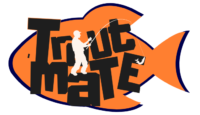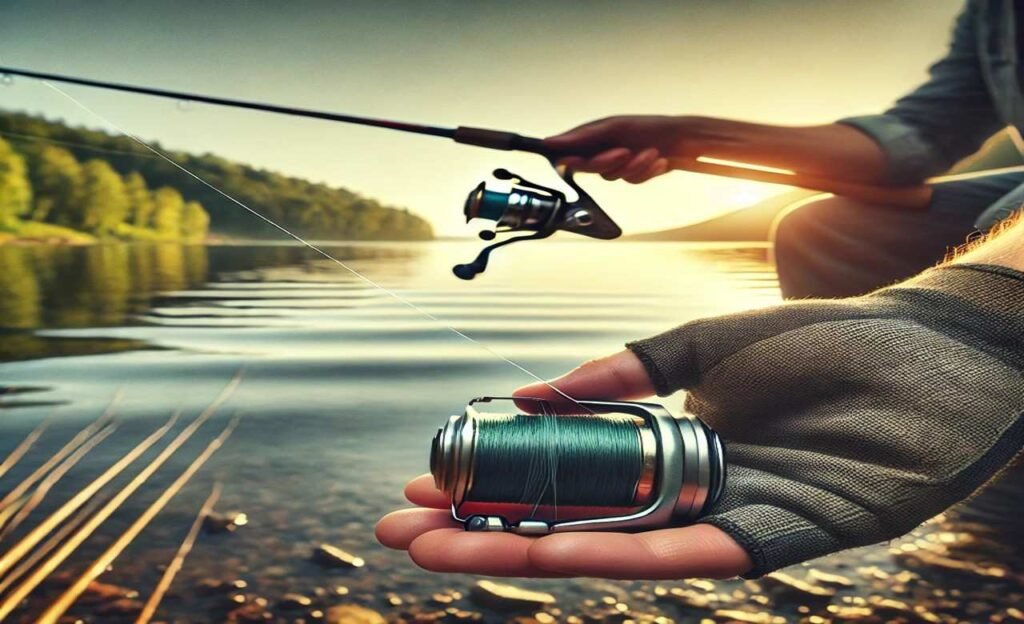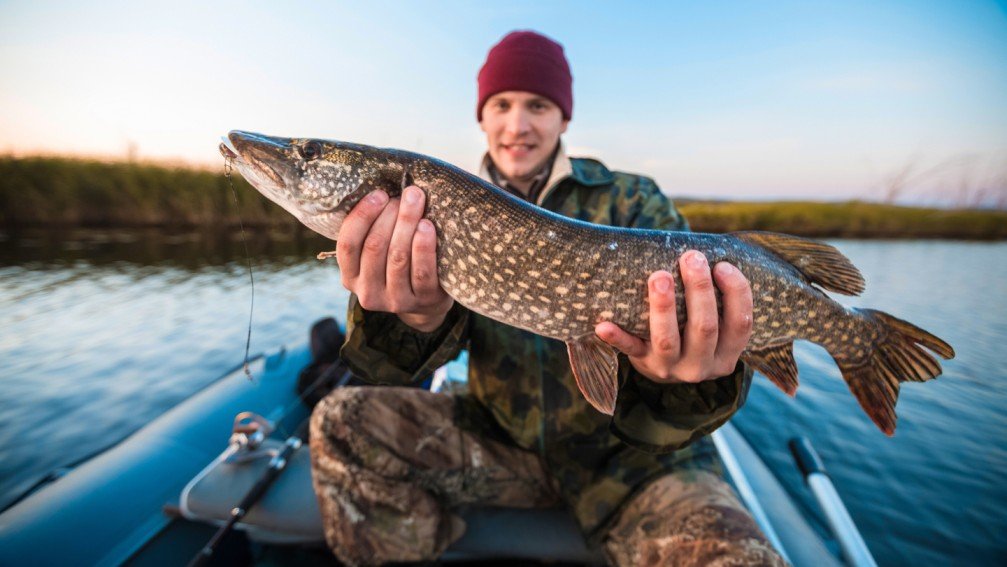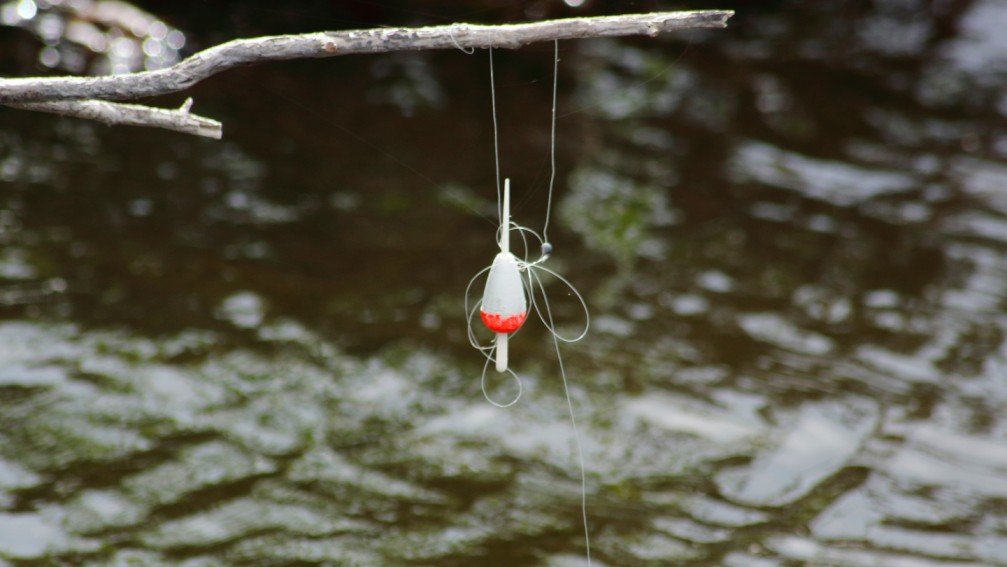Yes, fishing line can cut you. Thin, strong lines can cause deep cuts if handled improperly.
Fishing is a popular recreational activity enjoyed by many. Anglers use various types of fishing lines, each designed for specific conditions and fish species. Despite their usefulness, fishing lines can be hazardous. Thin, high-tensile lines, especially braided ones, can easily slice through skin.
Proper handling and safety precautions are essential to prevent injuries. Wearing gloves and using appropriate tools can help minimize risks. Being mindful of line tension and avoiding wrapping the line around fingers are also crucial. Practicing safe fishing techniques ensures a more enjoyable and injury-free experience.
Credit: www.reddit.com
Potential Dangers
Fishing can be a relaxing and enjoyable activity. But, it comes with some risks. One of the dangers is getting cut by a fishing line. Fishing lines are strong and can easily slice through skin. Understanding these potential dangers helps keep you safe.
Common Injuries
Fishing line cuts are common injuries for anglers. These cuts can happen quickly and can be very painful. They occur when the line moves fast or pulls tight. Here are some common injuries from fishing lines:
- Finger Cuts: These happen when the line slips through your fingers.
- Hand Lacerations: These are deeper cuts that can require stitches.
- Rope Burns: These occur when the line is dragged across the skin.
- Eye Injuries: These are rare but can be serious if a line snaps back.
Table of Common Injuries:Injury TypeDescriptionSeverityFinger CutsShallow cuts on fingersMild to ModerateHand LacerationsDeep cuts needing stitchesModerate to SevereRope BurnsFriction burns from lineMild to ModerateEye InjuriesDamage to eye from line snapSevere
Risk Factors
Several factors increase the risk of getting cut by a fishing line. Knowing these can help you avoid injuries:
- Wet or Slippery Hands: Wet hands make it hard to grip the line.
- High Tension: Tight lines snap back faster and harder.
- Thin Lines: Thinner lines can cut skin more easily.
- Inexperience: Beginners are more likely to mishandle lines.
Table of Risk Factors:Risk FactorExplanationWet or Slippery HandsReduces grip, increasing the chance of cutsHigh TensionLines under high tension snap back quicklyThin LinesThinner lines slice through skin more easilyInexperienceNew anglers may mishandle lines
Types Of Fishing Line
Fishing is a fun and relaxing hobby, but it can sometimes lead to injuries. One common concern is whether fishing line can cut you. The risk depends on the type of fishing line you use. Let’s explore the different types of fishing lines and their potential dangers.
Monofilament
Monofilament fishing line is made from a single strand of material, usually nylon. It is the most common type of fishing line and is popular among beginners. Monofilament is known for its flexibility and stretch, making it easy to handle.
While monofilament is generally safe, it can still cause cuts if you’re not careful. Here are some important points to consider:
- Thickness: Monofilament comes in various thicknesses. Thicker lines are less likely to cut you.
- Stretch: The line’s stretchiness can reduce the risk of cuts but can also create a snapping effect if tension is released suddenly.
How Cuts Occur
Fishing is a relaxing activity, but it can also be dangerous. One common issue is cuts from fishing lines. Understanding how cuts occur can help prevent them and ensure a safe experience.
Tension And Friction
Tension and friction are major causes of cuts from fishing lines. When you cast your line, it experiences tension. This tension increases when a fish bites or pulls the line.
Friction occurs when the line rubs against objects. This can include your skin, fishing rod guides, or underwater obstacles. Friction generates heat, which can cause burns and cuts.
Here are a few scenarios where tension and friction lead to cuts:
- The line snaps back after casting, hitting your hand or face.
- Reeling in a heavy catch increases tension, causing the line to slice through skin.
- The line drags across your fingers when you handle it without gloves.
Using a table can illustrate how different types of fishing lines affect tension and friction:
| Fishing Line Type | Tension Level | Friction Risk |
|---|---|---|
| Monofilament | Medium | Medium |
| Braided | High | High |
| Fluorocarbon | Low | Low |
Improper Handling
Improper handling of fishing lines also leads to cuts. Many anglers grip the line incorrectly, increasing the risk of injury. Holding the line too tightly or using bare hands can cause it to cut through the skin.
Some common improper handling practices include:
- Pulling the line with bare hands when snagged.
- Winding the line around fingers to secure a catch.
- Not wearing gloves during rough handling.
To avoid cuts from improper handling, follow these tips:
- Use fishing gloves to protect your hands.
- Handle the line with care and attention.
- Use tools like pliers to pull and secure the line.
Safety in fishing is crucial. Proper handling and understanding of tension and friction can minimize the risk of cuts from fishing lines.

Credit: www.texassaltwaterfishingmagazine.com
Preventive Measures
Fishing is a beloved pastime for many, but it’s not without its hazards. One of the most common injuries is cuts from fishing lines. Understanding and implementing proper preventive measures can help ensure a safe and enjoyable fishing experience. In this section, we will explore the essential steps to prevent cuts from fishing lines, focusing on the importance of using the proper gear and safe handling techniques.
Proper Gear
Using the right gear is crucial to prevent fishing line injuries. Always choose high-quality fishing lines. Cheap lines break easily and can snap back, causing cuts.
Wear protective gloves. They provide a barrier between your hands and the sharp fishing line. Here are some key features to look for in fishing gloves:
- Durable material: Choose gloves made from Kevlar or similar materials.
- Water-resistant: Ensure they can withstand wet conditions.
- Comfortable fit: They should fit snugly without restricting movement.
Use a line cutter tool instead of your hands. Tools like scissors or specialized line cutters make it safer to cut fishing lines. Here’s a comparison table of popular line cutter tools:
| Tool | Features | Price Range |
|---|---|---|
| Scissors | Easy to use, inexpensive | $5 – $10 |
| Specialized Line Cutters | Precise, designed for fishing lines | $15 – $25 |
| Multi-Tool | Versatile, includes other tools | $20 – $50 |
Wear protective clothing. Long sleeves and pants can provide additional protection. This is especially important if you’re dealing with heavy-duty fishing lines.
Safe Handling Techniques
Handle fishing lines with care to avoid cuts. Always keep a firm grip on the line. Never pull the line towards your body. This simple practice can prevent many injuries.
Untangle knots carefully. Rushing can lead to sudden snaps. Use tools to help untangle the line rather than pulling with your hands.
Use a line spooler. This device helps manage fishing lines effectively. It keeps the line from getting tangled and reduces the risk of cuts. Here’s how to use a line spooler:
- Place the spool on the spooler.
- Thread the line through the spooler’s guide.
- Turn the handle to wind the line smoothly.
Avoid overloading the fishing reel. Too much line can cause it to snap under tension. Follow the manufacturer’s guidelines for the maximum line capacity.
Store fishing lines properly. Keep them in a cool, dry place. Store them in a way that prevents tangling. This helps maintain the integrity of the line.
Educate yourself and others. Understand the risks and share this knowledge. Teach kids and new anglers safe handling techniques to prevent injuries.
First Aid For Cuts
Fishing is a fun and relaxing hobby. But, fishing lines can be sharp. They can cause cuts if handled carelessly. Knowing first aid for cuts is crucial. This guide will help you act quickly and safely.
Immediate Actions
If a fishing line cuts you, act fast. Clean the wound to prevent infection. Follow these steps:
- Wash your hands with soap and water.
- Rinse the cut under clean, running water.
- Use mild soap to gently clean the area.
- Pat dry with a clean towel.
Next, stop the bleeding. Use a clean cloth or bandage. Apply gentle pressure for a few minutes. If the bleeding doesn’t stop, keep applying pressure.
After the bleeding stops, apply an antiseptic. This helps prevent infection. You can use over-the-counter products like:
- Hydrogen peroxide
- Alcohol wipes
- Antibiotic ointment
Finally, cover the cut with a sterile bandage or dressing. This keeps dirt and germs out. Change the bandage daily or if it gets wet or dirty.
When To Seek Help
Some cuts need more than basic first aid. Seek medical help if:
- The cut is deep or gaping.
- Bleeding doesn’t stop after 10 minutes of pressure.
- There are signs of infection like redness, swelling, or pus.
- The cut is on a sensitive area like the face or joints.
Other reasons to see a doctor include:
- You can’t clean the wound fully.
- A foreign object is stuck in the cut.
- The cut was caused by a dirty or rusty fishing line.
If you haven’t had a tetanus shot in the last 10 years, you may need one. Tetanus is a serious infection that can enter through cuts. Always keep your tetanus shots up to date.
Fishing Line Safety Tips
Fishing is a relaxing hobby, but safety is crucial. Many people ask, “Can fishing line cut you?” The answer is yes. Fishing lines can cause serious injuries if not handled properly. This section focuses on Fishing Line Safety Tips to ensure a safe and enjoyable fishing experience.
Choosing The Right Line
Choosing the right fishing line is essential for safety. The type of line affects both the fishing experience and safety. Here are some tips for selecting the right line:
- Monofilament Lines: These are flexible and stretchable. They are less likely to cut your skin compared to braided lines.
- Braided Lines: These are strong and durable. They have a higher risk of causing cuts. Handle them with care.
- Fluorocarbon Lines: These are almost invisible underwater. They are less abrasive but can still cause cuts.
Consider the fish you aim to catch. Different fish require different lines:
| Fish Type | Recommended Line |
|---|---|
| Trout | Monofilament |
| Bass | Braided |
| Salmon | Fluorocarbon |
Always check the line’s weight capacity. Using a line that is too light can snap easily. A line that is too heavy can be hard to handle and increase the risk of cuts. Inspect the line regularly for wear and tear.
Difference between Monofilament and Flurocarbon
Storing Lines Safely
Proper storage of fishing lines is critical for safety. Improperly stored lines can cause injuries. Here are some tips for storing fishing lines safely:
- Keep Lines Tangle-Free: Store lines on spools or reels. This prevents tangling and reduces the risk of cuts.
- Avoid Direct Sunlight: UV rays can weaken the line. Store lines in a cool, dark place.
- Use Line Boxes: Line boxes keep lines organized. They also protect lines from damage.
Here is a simple guide to store fishing lines:
- Remove the line from the rod.
- Wrap the line around a spool or reel.
- Place the spool or reel in a line box.
- Store the line box in a cool, dark place.
Inspect stored lines regularly for damage. Replace lines showing signs of wear. Storing lines safely prolongs their life and ensures a safer fishing experience.
Personal Experiences
Fishing is a beloved pastime for many, but it comes with its own set of risks. One common concern among anglers is whether a fishing line can cut you. Personal experiences from seasoned fishermen provide valuable insights into this issue.
Stories From Anglers
Many anglers have shared their stories about getting cut by fishing lines. These personal accounts highlight the dangers and precautions needed.
One experienced angler, John, recalled a time when he was handling a heavy-duty braided line. He said, “I was reeling in a big catch when the line slipped through my fingers.” The result was a painful cut that took weeks to heal.
Another fisherman, Sarah, shared a similar experience. She was using a monofilament line and didn’t realize the tension it was under. “The line snapped back and sliced right through my skin,” she explained. She now always wears gloves when handling the line.
Here are some common scenarios where fishing lines can cause cuts:
- Reeling in a large fish: High tension on the line can cause it to snap back.
- Untangling knots: Fishing lines can be sharp, especially when pulled tight.
- Handling heavy-duty lines: Thicker lines can cause deeper cuts.
Lessons Learned
These personal experiences teach us important lessons about safety when fishing. Understanding the risks and taking precautions can help prevent injuries.
One key lesson is the importance of wearing protective gloves. Gloves can provide a barrier between your skin and the sharp line. Many anglers have found that this simple step can save them from painful cuts.
Another lesson is to always be aware of the line’s tension. When reeling in a fish, it’s crucial to monitor the pressure on the line. This can help prevent sudden snaps that can cause injuries.
Here are some additional safety tips:
- Use the right type of line: Choose a line suitable for the type of fishing you’re doing.
- Keep your hands dry: Wet hands can slip more easily, increasing the risk of cuts.
- Inspect your line regularly: Check for frays or weaknesses that could cause it to snap.
By learning from these stories and implementing these tips, you can enjoy fishing safely and avoid the risks associated with fishing lines.
Expert Insights
Many anglers wonder about the dangers of fishing lines. Can fishing lines cut you? This blog post dives into expert insights on this topic. Learn from professionals and discover essential safety recommendations to avoid injuries.
Interviews With Professionals
We interviewed several fishing experts to get their thoughts on the risks of fishing lines. Captain John Doe, a seasoned fisherman, shared his experiences:
- “Fishing lines can be very sharp. I’ve seen many cuts during my career.”
- “Thin, strong lines like braided lines are particularly dangerous.”
Another expert, Dr. Jane Smith, a marine biologist, explained:
- “Fishing lines can cause deep cuts due to their thinness and strength.”
- “Proper handling is crucial to avoid injuries.”
Angler Mike Brown added his perspective:
- “Always wear gloves. They provide an extra layer of protection.”
- “Be cautious when handling the line, especially under tension.”
From these insights, it’s clear that fishing lines pose a real risk. Experts agree on the importance of careful handling and protective gear.
Safety Recommendations
Based on expert advice, here are some key safety recommendations to prevent fishing line injuries:
- Wear Gloves: Always wear gloves to protect your hands. They can prevent cuts and abrasions.
- Use Line Cutters: Don’t use your hands to break the line. Use proper line cutters instead.
- Handle with Care: Avoid pulling the line with bare hands. Handle it gently to reduce tension.
- Inspect the Line: Regularly check your fishing line for frays or damage. Replace it if necessary.
- Keep First Aid Kit: Always have a first aid kit handy. Treat any cuts immediately to prevent infection.
These recommendations can significantly reduce the risk of injuries. Proper gear and careful handling are essential for safe fishing experiences.
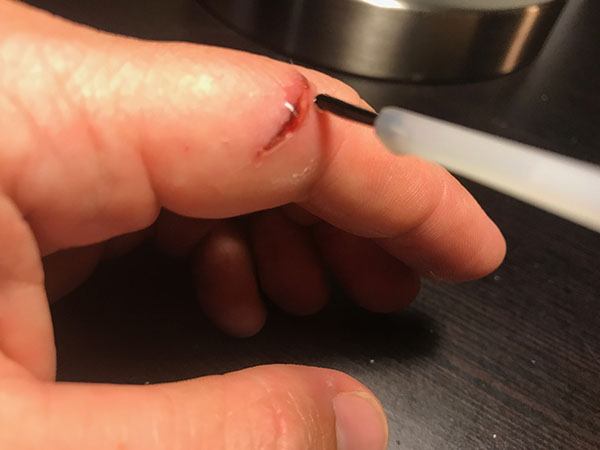
Credit: www.lafishblog.com
Fishing lines can indeed cut you if not handled properly. Always prioritize safety while fishing. Use protective gear and stay cautious. Understanding the risks and taking preventive measures can ensure an enjoyable and safe fishing experience. Remember, a little precaution goes a long way in keeping your fishing adventures injury-free.
In conclusion, wearing protective fishing gloves provides a barrier between your hands and the sharp fishing line. Durable gloves made from materials like Kevlar can greatly reduce the risk of injuries. You can find some of the best fishing gloves to enhance your safety.
FAQs:
Can Fishing Line Cause Injuries?
Yes, fishing line can cause injuries. It can cut through skin if handled improperly. Always use caution.
How To Prevent Fishing Line Cuts?
To prevent cuts, wear gloves and handle fishing line carefully. Avoid wrapping it around your hands.
Is Fishing Line Dangerous To Use?
Fishing line can be dangerous if not used correctly. It can cut skin and cause injuries.
What Should You Do If Cut By Fishing Line?
If cut by fishing line, clean the wound immediately. Apply antiseptic and cover with a bandage.
